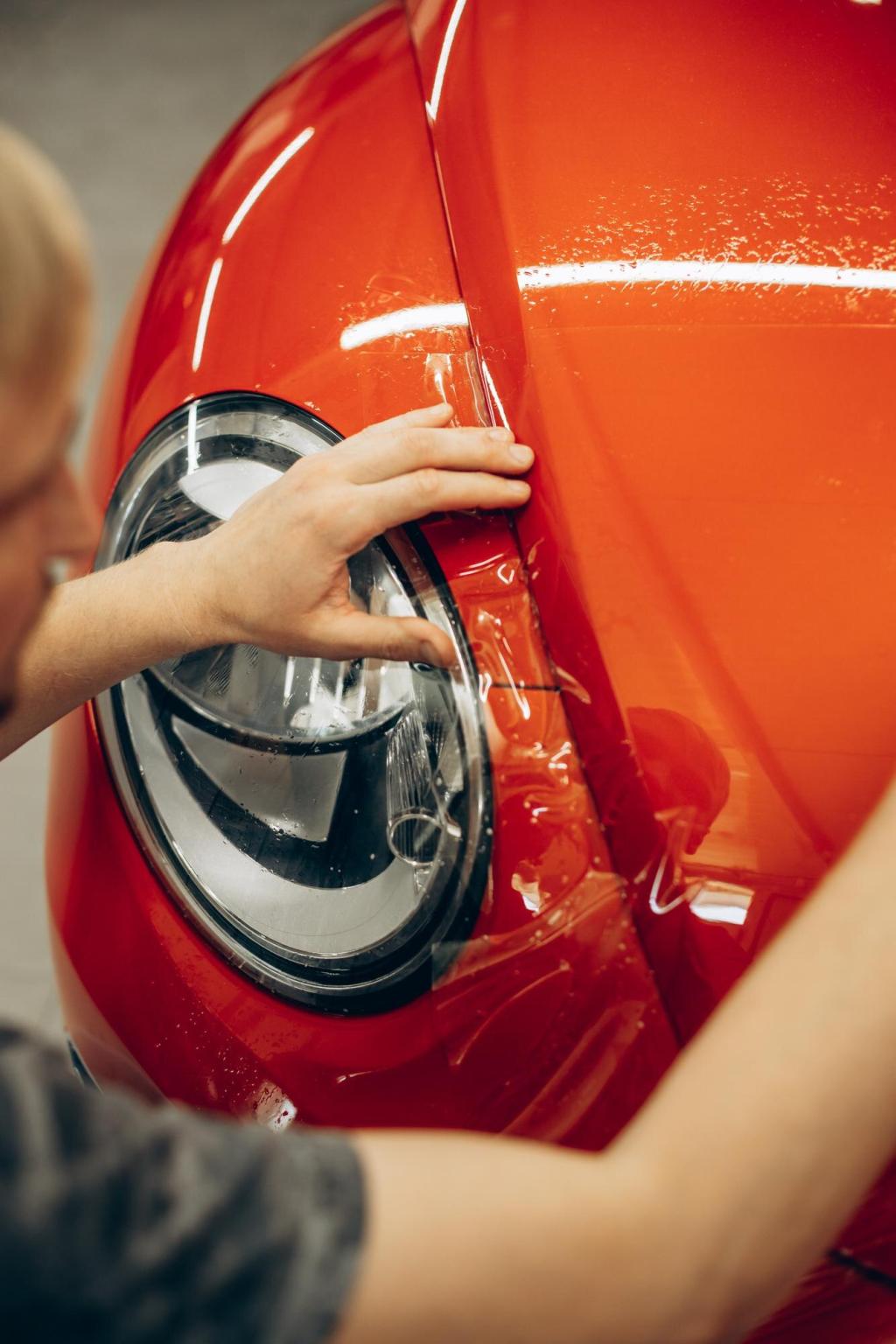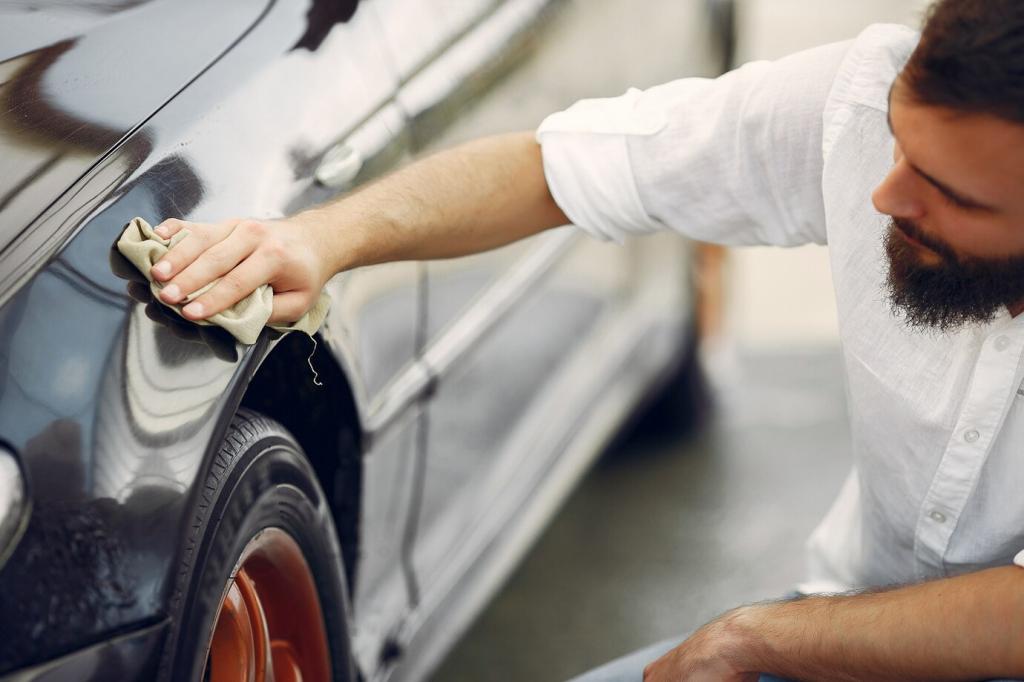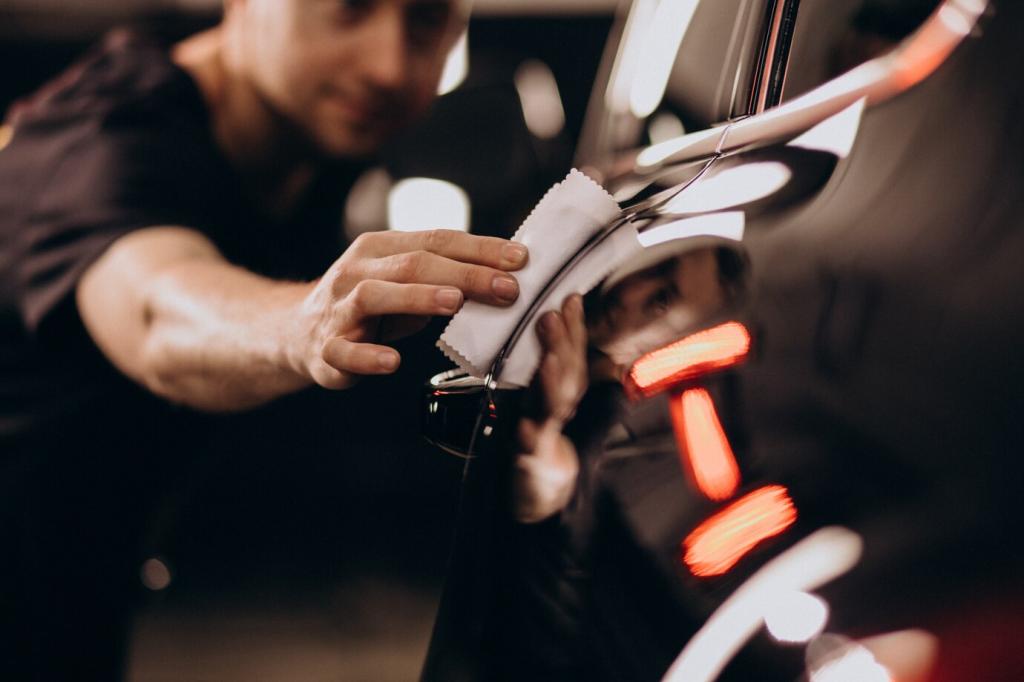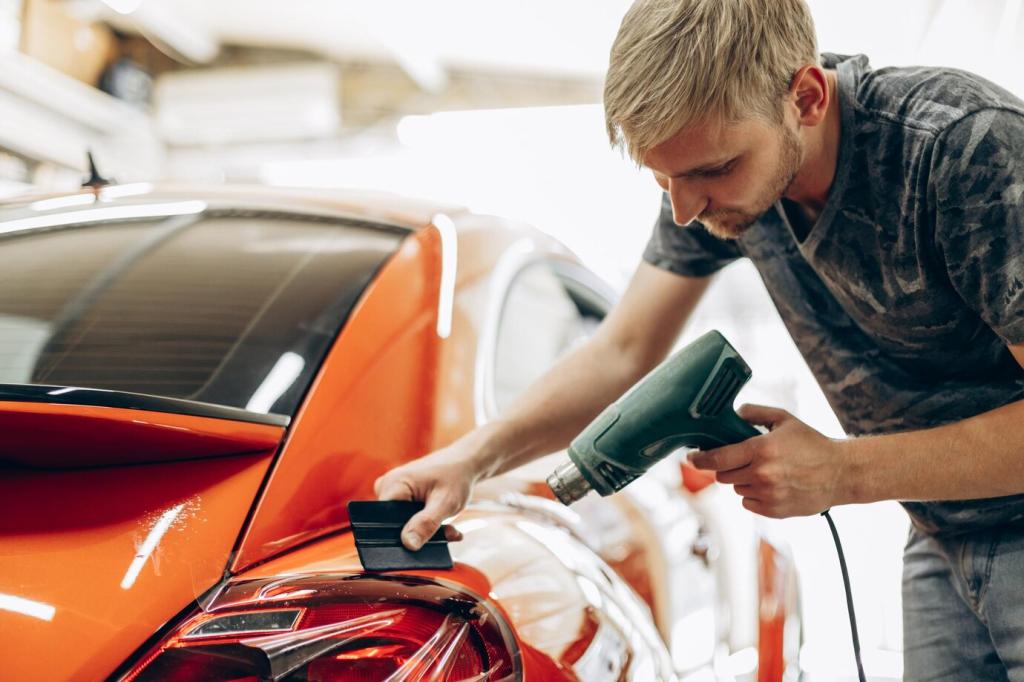Essential Tools for Car Detailing: Build a Kit That Shines
Today’s chosen theme: Essential Tools for Car Detailing. Step into a practical, enthusiast-friendly guide to the gear that transforms weekend washes into professional-level results. Explore must-have tools, learn why they matter, and pick up real-world tips that protect paint, save time, and spark pride. Share your go-to tools in the comments and subscribe for more gear-focused deep dives.
Your Core Kit: The Non‑Negotiables Every Detailer Needs
Soft, edgeless microfiber towels are the quiet heroes of detailing. High GSM towels absorb safely, reduce marring, and make drying, buffing, and interior dusting efficient. Start with a color-coded system to separate paint, glass, and wheels. Your future self will thank you when towels last longer and finish stays flawless.


Foam Cannon and Pressure Washer
Pre-foaming with a foam cannon lets surfactants encapsulate dirt before your mitt ever touches the paint. A modest pressure washer boosts foam quality and rinsing power, shortening wash time and reducing contact. It’s oddly satisfying to watch grime slide off. Share your preferred dilution and foam density tricks with fellow readers.
Dedicated Wheel and Tire Tools
Use a barrel brush for inner rims, a smaller spoke brush for tight gaps, and a stiff tire brush to scrub browning. Separate buckets and towels for wheels prevent metal particles from contaminating paint towels. The result is safer washing and a wheel finish that pops. Don’t forget to clean lug nuts meticulously.
Drying Without Damage
A large, twisted-loop drying towel or a cordless blower makes drying faster and safer. Blowers chase water from mirrors, badges, and trim, reducing drips that cause spots. Lightly glide the towel; never press hard. Finish with a drying aid for extra slickness and gloss. Subscribe for our upcoming towel care guide.
Decontamination Essentials: Smooth Paint, Deeper Gloss
Traditional clay bars offer precision, while synthetic clay mitts speed up larger panels. Always use a dedicated clay lubricant to avoid marring. After claying, your paint should feel glass-smooth, making polishing easier and protection more durable. Try the baggie test on your hood and share your before-and-after impressions.
Iron particles embed from brake dust and industrial fallout. A quality iron remover dissolves them chemically, often turning purple as it works. Use outdoors and avoid hot panels. This step can dramatically improve clarity before polishing. Readers often report a shocking amount of fallout on white cars—have you noticed it?
Road tar and old adhesive can stubbornly cling to lower panels. A safe tar remover softens residue without harsh rubbing. Work gently with a dedicated microfiber and rewash the area. The payoff is a cleaner, more uniform surface that accepts waxes and coatings evenly. Drop your favorite brand recommendations below.


Dual‑Action Polisher and Pad Selection
A dual‑action polisher is ideal for beginners and pros thanks to safer oscillation. Combine cutting, polishing, and finishing pads to match paint condition. Keep a pad brush handy to clean on the fly, and swap pads before saturation. Share your favorite machine throw length and why it suits your workflow best.

Compounds, Polishes, and Test Spots
Start with a small test spot using least aggressive combinations first. Modern diminishing abrasives can cut fast and finish clean when paired correctly. Wipe residue with premium microfibers and inspect under strong lighting. A careful approach saves clearcoat and time. Comment with your go-to one-two punch for daily drivers.

Inspection Lights and Paint Thickness Gauges
Handheld LED inspection lights reveal real paint conditions that garage lighting hides. A paint thickness gauge adds confidence by mapping thin areas before heavy correction. One pro told us a gauge saved a cherished classic from edge burn-through. Invest in these tools and you’ll polish with precision, not guesswork.
Interior Detailing Tools: Clean, Fresh, and Organized
Vacuum, Crevice Tools, and Soft Brushes
A powerful vacuum with flexible crevice tools reaches seat rails and tight console gaps. Pair it with boar’s-hair brushes for dusting vents and switches without scratching. Work top-down to avoid recontamination. You’ll be amazed how tidy a cabin feels when debris vanishes from places you rarely notice yet always touch.
Steam Cleaners and Extractors
Steam cuts through grime on plastics and fabric with minimal chemicals, while a hot-water extractor lifts deep stains from carpets and seats. Use light passes and let materials dry fully. The first time you see murky water in the recovery tank, you’ll understand why these tools are interior game-changers.
Gentle Cleaners and Interior Towels
Choose interior-safe APC at proper dilution and pair with short-pile towels for controlled wiping. Matte finishes look richer without greasy residue when you buff lightly after cleaning. Keep a dedicated glass towel to avoid smears on screens. Share your dilution ratios and favorite neutral scents that clients consistently love.
Protection and Finishing: Seal the Work, Amplify the Look
Applicators for Waxes, Sealants, and Coatings
Foam and microfiber applicators spread products evenly, minimizing high spots. Work in thin layers and follow cure times. For coatings, use suede applicators and inspect under bright light. The right applicator turns protection into a relaxing final ritual. Tell us which product you trust for daily-driven protection and why.
Tire Dressings and Trim Restorers
Use a block applicator for even tire dressing that dries to a clean, non-sling finish. Trim restorers can revive faded plastics when applied patiently and layered. Always wipe excess. A subtle satin look often outlasts glossy sheens and feels more refined. What finish do you prefer for weekend cars versus commuters?
Glass Tools for Crystal Visibility
Two-towel method—one damp, one dry—paired with a quality glass cleaner and a dedicated glass towel eliminates haze. A waffle-weave towel edges out paper for clarity. Clean the wipers and inside windshield strip at the end to stop streaks. Share your sunrise or night-drive moment when perfect glass made the road feel new.
Organization, Safety, and Efficiency: Work Smarter
Carts, Caddies, and Labels
A rolling cart keeps polishes, pads, and towels at your side, saving steps and accidental drops. Label bottles with dilution and date, and color-code towels by task. This simple system prevents cross-contamination and guesswork. Post your cart setup or shelf layout—other detailers often borrow great ideas from your workflow.
PPE and Cord Management
Nitrile gloves, safety glasses, and ear protection make long sessions comfortable. Keep cords over your shoulder or use short extensions to avoid dragging across paint. Cordless tools can reduce trip hazards and fatigue. A tidy, safe bay helps you focus on technique instead of wrestling cables. Safety is a performance tool, too.
Water Quality and Lighting
Deionized or softened water minimizes spotting, especially in sun-prone driveways. Bright, color-accurate lighting—think LED panels or portable inspection lights—reveals residue and defects before they surprise you outside. The combination makes results repeatable across seasons. Tell us how you solved hard-water headaches in your own garage.

